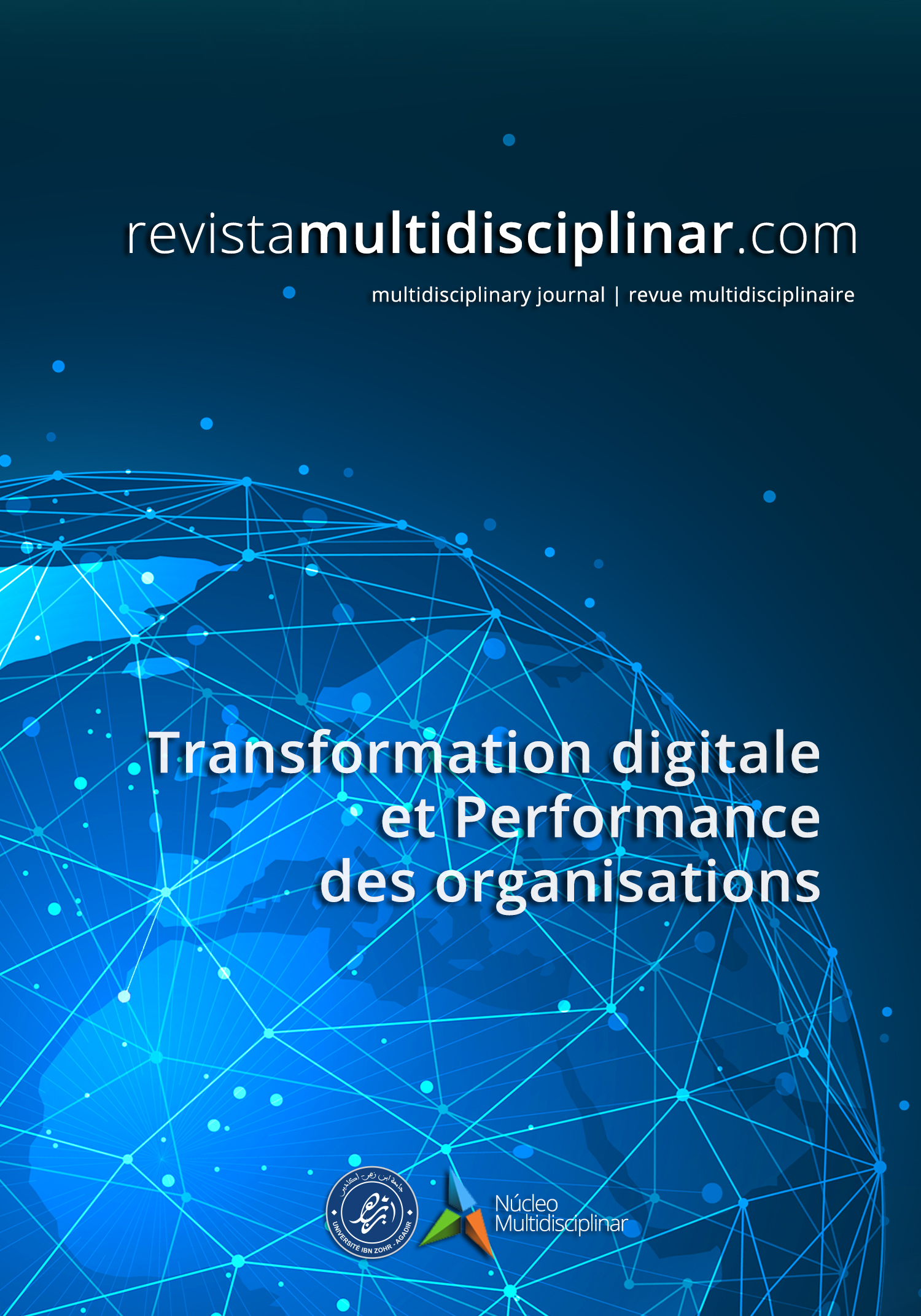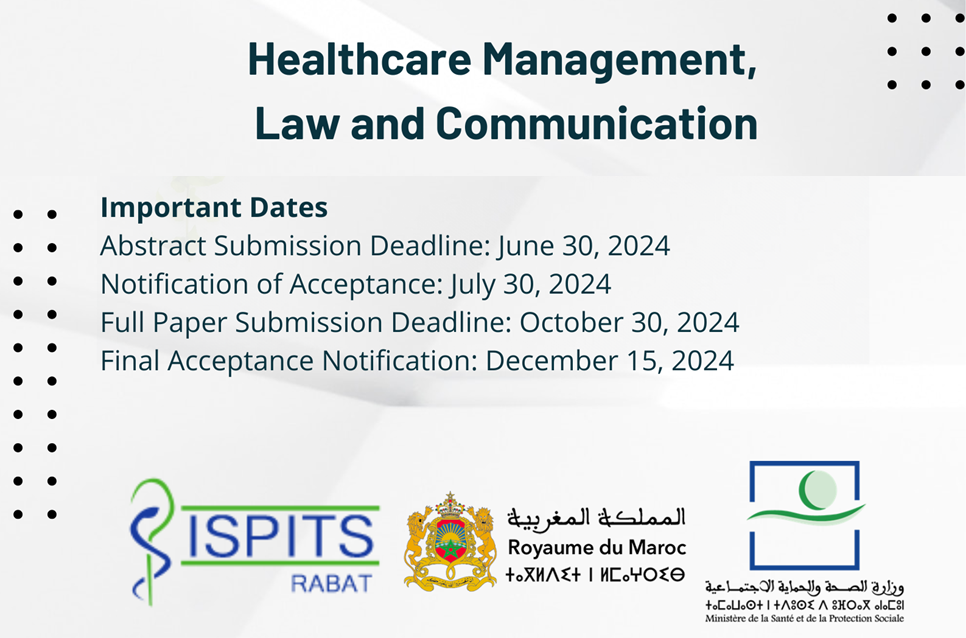Utilisation du système d’information des ressources humaines (SIRH) dans l’entreprise
Cas d’un échantillon d’entreprises de la Région Souss-Massa au Maroc
DOI:
https://doi.org/10.23882/rmd.23161Keywords:
HRIS operational aspects, HRIS decision-making aspects, separate HR modules, HRIS processes, HRIS applicationsAbstract
The use of innovative tools in HRM is becoming more and more necessary to increase the efficiency of the HR function but also that of the organization. This is why today's organizations are increasingly resorting to the acquisition of HR solutions such as the human resources information system (HRIS). This tool, which often takes the form of an ERP or separate HR modules, is structured around administrative processes dedicated to keeping employee files, managing time and activities, payroll and benefits, etc., in order to focus on other HR activities with a higher value-added decision-making aspect such as GPEC, etc. The reason behind this study is to know the state of play in the use of the HRIS at the level of the Souss-Massa Region in Morocco. To do this, we have chosen to study a sample of companies in the private and semi-public sectors through a quantitative study based on a questionnaire which was carried out after seeing important aspects of previous studies on this subject. The survey concerned HR actors in these organizations. The main results of this research, mainly based on the CPA revealed that the HRIS is mainly focused on the traditional components such as payroll and benefits management, employee record keeping, time and activity management, recruitment and selection and monitoring and analysis of turnover.
References
ADP Europe. (2008). Livre Blanc - Externalisation de la paie en Europe, Publications ADP. Disponible en ligne sur https://www.leslivresblancs.fr/livre/entreprise/externalisation/lexternalisation-de-la-paie-en-europe, consulté le 14 avril 2023
Akbulut, Y., Kesim, M., & Odabaşı, H. F. (2007). Construct validation of ICT indicators measurement scale (ICTIMS). The International Journal of Education and Development using Information and Communication Technology (IJEDICT), 3(3), 60-77.
Al-Dmour, R.H. (2014). An integration model for identifying the determinants of the adoption and implementation level of HRIS applications and its effectiveness in business organisations in Jordan (Unpublished doctoral thesis). Brunel University London, London, United Kingdom.
Al-Dmour, R.H., Love, S., & Debei, M. M. A. (2015). Measuring the effectiveness of HRIS practice in business organisations: a study in the context of a developing country. International Journal of Business Innovation and Research, 9(5), 507-525. https://doi.org/10.1504/ijbir.2015.071594
Al-Dmour, R.H., Love, S., & Debei, M. M. A. (2016). Factors influencing the organisational adoption of human resource information systems: a conceptual model. International Journal of Business Innovation and Research, 11(2), 161-207. https://doi.org/10.1504/ijbir.2016.077986
Al-Dmour, R.H., Ra’, N. A., Masa’, ed, deh, N. A., & Obeidat, B. Y. (2017). Factors influencing the adoption and implementation of HRIS applications: are they similar? International Journal of Business Innovation and Research, 14(2), 139. https://doi.org/10.1504/ijbir.2017.086276
Aletaibi, R. G. (2016). An analysis of the adoption and use of HRIS in the public Universities in Saudi Arabia (Doctoral dissertation, Coventry University).
Al-Hamidi, N. A., Al-Samarrai, S. A., & Al-Obeid, A. (2019), Management Information Systems: A Contemporary Introduction, Dar Wael For Publishing And Distribution, Amman, Jordan.
Allegre C.B., & Andreassian A.E. (2008). Gestion des Ressources Humaines, valeur de l’immatériel, Edition de Boeck Université, Paris, 1ère édition.
Al-Zubi, K. N. (2023). The Structure of Management Information System and its Impact on the Management of the Corona Crisis in Jordanian Universities. International Journal of Professional Business Review, 8(4), e01175-e01175. https://doi.org/10.26668/businessreview/2023.v8i4.1175
Anouar, .H., Attou, .A., & Khihel, .F. (2020). La valorisation des Ressources Humaines : Quelles pratiques pour une gestion Socialement Responsable ?. Revue Internationale du Chercheur, 1(3), 347-367. https://www.revuechercheur.com/index.php/home/article/view/80
Bayraktaroglu, S., Kahya, V., Atay, E., & Ilhan, H. (2019). Application of expanded technology acceptance model for enhancing the HRIS usage in SMEs. International Journal of Applied Management and Technology, 18(1), 48-66. https://doi.org/10.5590/IJAMT.2019.18.1.04
Beatrix, G. (2022). Literature review enterprise information system user satisfaction: data quality analysis, information quality, and service quality. Dinasti International Journal of Digital Business Management, 3(4), 593-600. https://doi.org/10.31933/dijdbm.v3i4
Bertalanffy, L. V. (1968). General system theory: Foundations, development, applications. G. Braziller.
Bhuiyan, F., Chowdhury, M. M., & Ferdous, F. (2014). Historical evolution of human resource information system (HRIS): An interface between HR and computer technology. Human Resource Management Research, 4(4), 75-80. https://doi.org/10.5923/j.hrmr.20140404.01
Bilan Social. (1979). Institut de gestion sociale, Paris.
Brandon-Jones, A., & Kauppi, K. (2018). Examining the antecedents of the technology acceptance model within e-procurement. International Journal of Operations & Production Management, 38(1), 22-42. https://doi.org/10.1108/ijopm-06-2015-0346
Churchill, G. A. (1979). A Paradigm for Developing Better Measures of Marketing Constructs. Journal of Marketing Research, 16(1), 64–73. https://doi.org/10.1177/002224377901600110
Conway, J. M., & Huffcutt, A. I. (2003). A Review and Evaluation of Exploratory Factor Analysis Practices in Organizational Research. Organizational Research Methods, 6(2), 147–168. https://doi.org/10.1177/1094428103251541
Cronbach, L. J. (1951). Coefficient alpha and the internal structure of tests. Psychometrika, 16(3), 297–334. https://doi.org/10.1007/bf02310555
Descartes, R. (2016). Discours de la méthode. France: Flammarion.
Evrard, Y., Pras, B., & Roux, E. (1997). Market–Etudes et recherches en marketing (2ème édition). Paris: Nathan.
Evrard, Y., Pras, B., & Roux, E. (2000). Etudes et recherches en marketing. Dunod, Paris.
Evrard, Y., Pras, B., & Roux, E. (2009), Market : fondement et méthodes des recherches en marketing. Dunod, 4ème édition, Paris.
Exbrayat, G., Fisteberg, N., & Fouesnant, R. (2010). Le Système d’Information des Ressources Humaines (SIRH): un atout dans l’optimisation de la GRH au service de l’entreprise. MBA-MRH, Université Dauphine, Paris, 24.
Fabrigar, L. R., Wegener, D. T., MacCallum, R. C., & Strahan, E. J. (1999). Evaluating the use of exploratory factor analysis in psychological research. Psychological Methods, 4(3), 272–299. https://doi.org/10.1037/1082-989x.4.3.272
Gillet, M., & Gillet, P. (2010). SIRH : Système d'information des ressources humaines, Editions Dunod 8.
Hair, J.F., Black, W.C., Babin, B.J., & Anderson, R.E. (2010). Multivariate Data Analysis. 7th Edition. Upper Sandle River, N. J: Prentice Hall.
Handoko, R., & Irwan. (2019). "Web-Based Human Resource Management Application".
Hendrickson, A.R. (2003) "Human resource information systems: Backbone technology of contemporary human resources", Journal of Labor Research, 24(3), 382-394.
Igalens, J., Roussel P., (1998), Méthodes de recherche en gestion des ressources humaines, Economica, Paris.
Jemine, G., & Guillaume, K. (2022). Lifting the veil on HRIS adoption: the role of vendors and consultants in the diffusion of HR innovations. Information Technology & People, 35(7), 2418-244. https://doi.org/10.1108/ITP-02-2021-0114
Jolibert, A., & Jourdan, P. (2006). Marketing Reseach: méthodes de recherche et d'études en marketing (No. halshs-00132470).
Karrakchou, S. (2020). La motivation du capital humain : facteur déterminant de l’engagement au travail et de la performance organisationnelle. Revue Française d’Economie et de Gestion, 1(2), 1-22.
Le Moigne, J. (1995). Les épistémologies constructivistes. France: Presses universitaires de France.
Lee, G., & Xia, W. (2006). Organizational size and IT innovation adoption: A meta-analysis. Information & Management, 43(8), 975–985. https://doi.org/10.1016/j.im.2006.09.003
Lesmini, L., Marlita, D., Sawitri, N. N., & Soehaditama, J. P. (2023). Business Software Human Resource Information System for Assistance Human Capital Performance. Formosa Journal of Multidisciplinary Research, 2(4), 711-718. https://doi.org/10.0.218.119/fjmr.v2i4.3818
Mirdasse, S., & Jaouhari, L. (2021a). L’informatisation de la GRH - Quels mécanismes ? Cas d’une société anonyme dans la région du Souss-Massa - Maroc. Revue Internationale des Sciences de Gestion, 4(2). https://doi.org/10.5281/zenodo.4764615
Mirdasse, S., & Jaouhari, L. (2021b). The Humain ressources information system - an essenstiel tootl for organisations: A theoretical analysis. International Journal of Accounting, Finance, Auditing, Management and Economics, 2(3), 109-132. https://doi.org/10.5281/zenodo.4785662
Mishra, A., & Akman, I. (2010). Information Technology in Human Resource Management: An Empirical Assessment. Public Personnel Management, 39(3), 271–290. https://doi.org/10.1177/009102601003900306
Noutsa, F.A., Kala Kamdjoug, J.R., & Fosso Wamba, S. (2017). Acceptance and Use of HRIS and Influence on Organizational Performance of SMEs in a Developing Economy: The Case of Cameroon. In: Rocha, Á., Correia, A., Adeli, H., Reis, L., Costanzo, S. (eds) Recent Advances in Information Systems and Technologies. WorldCIST 2017. Advances in Intelligent Systems and Computing, vol 569. Springer, Cham. https://doi.org/10.1007/978-3-319-56535-4_57
Nunnally, J.C. (1978). An Overview of Psychological Measurement. In: Wolman, B.B. (eds) Clinical Diagnosis of Mental Disorders. Springer, Boston, MA. https://doi.org/10.1007/978-1-4684-2490-4_4
Pallant, J. (2011). SPSS survival manual: A step by step guide to data analysis using the SPSS program (4th ed.). Crows Nest NSW, Australia: Allen & Unwin.
Panjaitan, F. (2017). "Implementation of Human Resources Information System Has An Effect on Career Development and Work Discipline and Its Impact on Service Quality (Survey on State Civil Apparatus in Medan City Government Agency)". Dissertation of Doctoral Program in Management Science Universitas Padjadjaran.
Philippeau, G., & Philippeau, G. (1986). Comment interpréter les résultats d'une analyse en composantes principales? (Vol. 63). Paris, France: ITCF. Lien permanent : http://pascal-francis.inist.fr/vibad/index.php?action=getRecordDetail&idt=7471164
Qaisar, N., Shahzad, K., & Arif, M. (2018). Extent of HRIS Adoption And Its Impact On Organization's Performance: Moderating Role Of HR Staff Expertise. Abasyn University. AICTBM-18, 1-11, Journal of Social Sciences, 6(3), 82-93. https://doi.org/10.2991/itmr.2017.6.3.2
Rahman, M. A., Qi, X., & Jinnah, M. S. (2016). Factors affecting the adoption of HRIS by the Bangladeshi banking and financial sector. Cogent Business & Management, 3(1), 1-10. https://doi.org/10.1080/23311975.2016.1262107
Reineke, N. (2016). The Implementation of integrated Management Information Systems in the Human Resource Management: An empirical Study of Success Factors. The Journal of Applied Leadership and Management, 4, 67-81, http://www.journal-alm.org/article/view/17110
Roussel, P., Wacheux, F. (2005). Management des ressources humaines: Méthodes de recherche en sciences humaines et sociales. De Boeck Supérieur. https://doi.org/10.3917/dbu.rouss.2005.01
Sablok, G., Stanton, P., Bartram, T., Burgess, J., & Boyle, B. (2017). Human resource development practices, managers and multinational enterprises in Australia. Education + Training, 59(5), 483–501. https://doi.org/10.1108/et-02-2016-0023
Silva, F. (2012). Être e-DRH: postmodernité, nouvelles technologies et fonctions RH. France: Éd. Liaisons.
Taylor, S., & Todd, P. A. (1995). Understanding Information Technology Usage: A Test of Competing Models. Information Systems Research, 6(2), 144–176. https://doi.org/10.1287/isre.6.2.144
Teo, T. S. H., Lim, G. S., & Fedric, S. A. (2007). The adoption and diffusion of human resources information systems in Singapore. Asia Pacific Journal of Human Resources, 45(1), 44–62. https://doi.org/10.1177/1038411107075402
Trine, J. J. (2013). HR Operations: Adding Value by Driving Effective & Efficient HR Service Delivery. Disponible en ligne sur https://www.coursehero.com/file/127784499/04024e6e-05a5-4719-acd1-51548553479bpdf/, consulté le 03 mai 2023
Downloads
Published
How to Cite
Issue
Section
License
Copyright (c) 2023 Samir Mirdasse , Lhassane Jaouhari, Rachid El Bettioui

This work is licensed under a Creative Commons Attribution-NonCommercial 4.0 International License.









